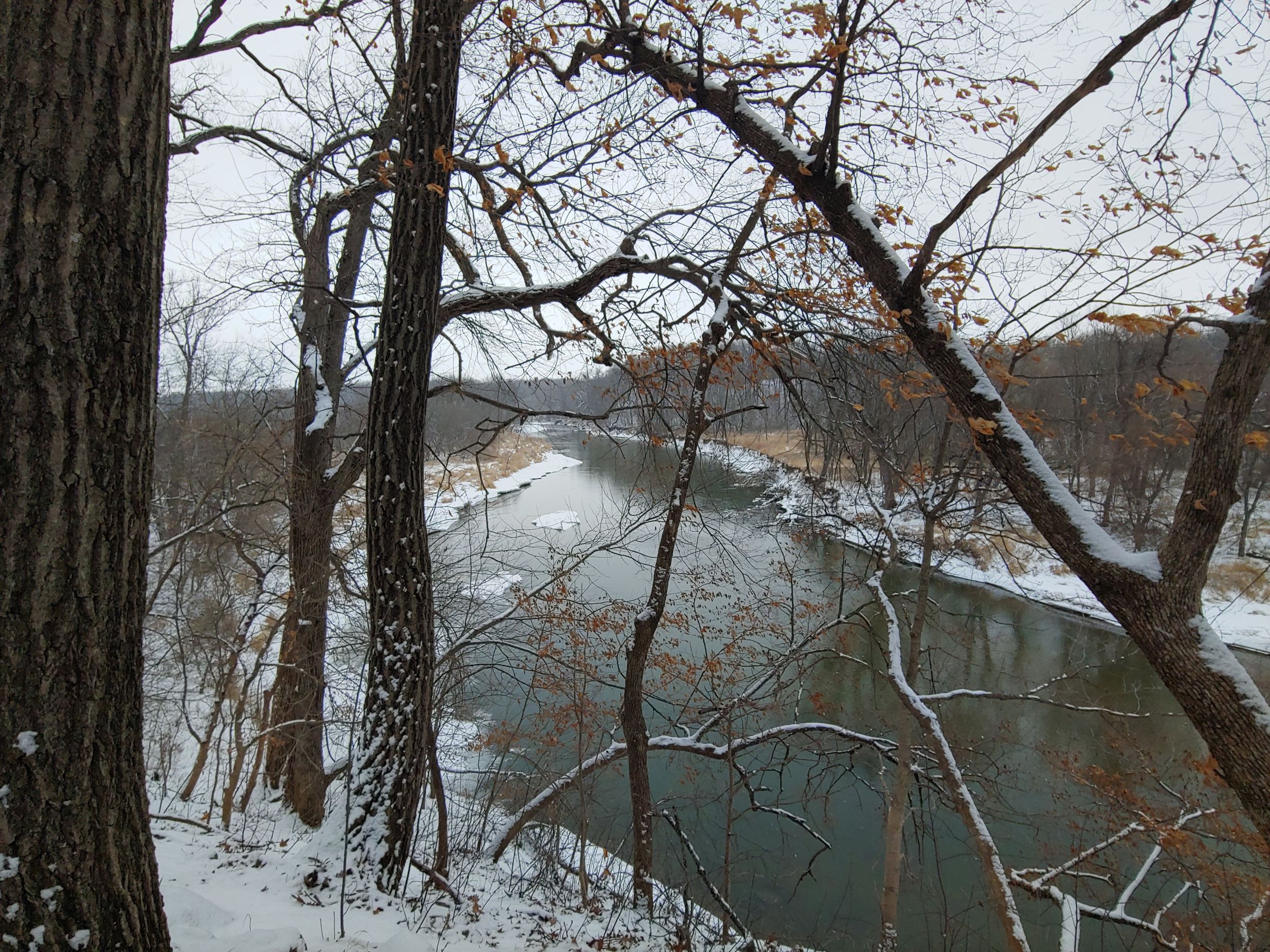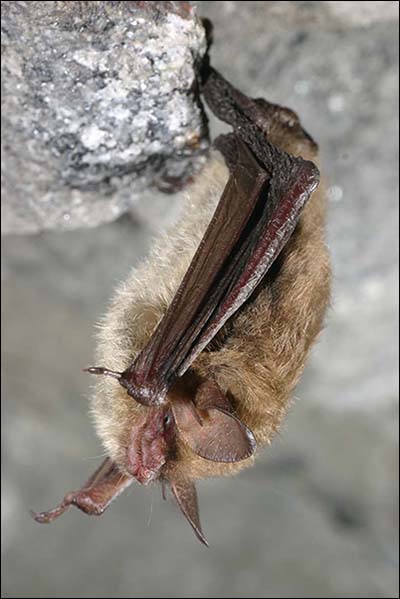New dawn for night fliers
By Jessica Riebkes Clough, program assistant, jclough@inhf.org on December 20, 2021 in Blog

By day, two of Iowa Natural Heritage Foundation’s (INHF’s) newest properties are teeming with life. Here, monarch butterflies forage for milkweed, birds sing in the woodland and the next generation of oak trees reach for pockets of sunlight. Bobcats and river otters have been spotted. The presence of each of these species is encouraging on its own, but none are the main motivation behind these recent protection projects.
Visitors to these properties rarely see the species at the center of INHF’s ongoing restoration — bats. These nocturnal fliers are an essential part of Iowa’s ecosystem and have become an increased focus of INHF’s stewardship work in recent years.
Iowa’s bats
 |
| Northern Long Eared Bat |
In summer, Iowa is home to nine native bat species. Their role in insect control alone provides immeasurable benefits to humans and agriculture. Unfortunately, threats to bat species across North America — most notably habitat loss and White Nose Syndrome — are currently very high. Consequently, two Iowa bat species, the Indiana Bat and the Northern Long-eared Bat, are now on the Endangered Species List (see sidebar), and other Iowa species are likely to be evaluated for listing in the near future.
Smaller, localized threats, like the growing number of wind turbines, exacerbate the challenges facing bat populations. The United States Fish & Wildlife Service (USFWS) often works with energy companies to develop plans that address how to mitigate the impacts of wind turbines to bats while continuing to reap their environmental and economic benefits. In cases where disturbance to bat populations is unavoidable, energy companies may offset the impact by funding long-term protection of bat habitat elsewhere in the state. This is where INHF comes in.
In partnership
Seeking a respected conservation organization well-versed in land stewardship, MidAmerican Energy Company approached INHF to partner with them on these mitigation projects. Along with a team from the USFWS and the Iowa Department of Natural Resources, INHF staff help identify properties across the state that already possess quality bat habitat but lack long-term protection, or properties that have the potential to be restored to suitable habitat. Without the threat of habitat loss and with stewardship tailored to their needs, these areas will become a refuge for bats.
“Energy companies may be required to offset the effects of wind turbines on bat populations, but legally, there’s a lot of leeway when it comes to how they go about doing that. MidAmerican wants to do this right,” said INHF President Joe McGovern. “By partnering with them on these projects, we’re able to help select ideal sites, and ensure that together, we’re successful in maintaining high-quality habitat that supports the recovery of Iowa’s bat populations.”
So far, the team has selected two properties: Myotis Bluffs and Bell Branch Timber. Named for the scientific name of several bat species that the property will help protect and its bluffs overlooking the Middle Raccoon River in Dallas and Guthrie counties, Myotis Bluffs’ 84 acres will be stewarded primarily for the benefit of the Northern Long-eared Bat. Bell Branch Timber, which includes 434 acres of mature woodland and open grassland along the Bell Branch of Soap Creek in Davis County, offers a large block of contiguous habitat suitable for the Indiana Bat, among others. More properties will be identified in the next few years.
A new approach
Some stewardship practices utilized will be unique to the bat properties, such as leaving dead trees, or “snags,” standing. Female bats use snags as roosts to form maternity colonies, which is critical to the success of bat species. In addition, some properties will receive artificial bat roosts constructed to look like bark. These structures will supplement the live trees on site, providing lasting roost sites for species that have adapted to roosting in man-made structures.
In a way, it’s a change for INHF to approach stewardship work with a specific type of wildlife in mind. But just as bats contribute to Iowa’s outdoors in many ways, managing these sites for bat populations will benefit many species.
“Understanding the needs of endangered bats allows us to tune into how our management, and the timing of our actions, affects different species,” McGovern said. “Our ultimate stewardship goal is the same as usual — high-level ecological restoration work.”
Each property will be part of the bat project for at least 30 years. During that time, staff will provide reports to the team on stewardship activities, use of the artificial structures and changes to the properties. As we learn more about bat conservation, our actions will adjust to fit different needs. Even if we rarely spot a bat while on site, it feels good to know that the woodland will provide a stable, healthy place for them to live in the days — and nights — to come.